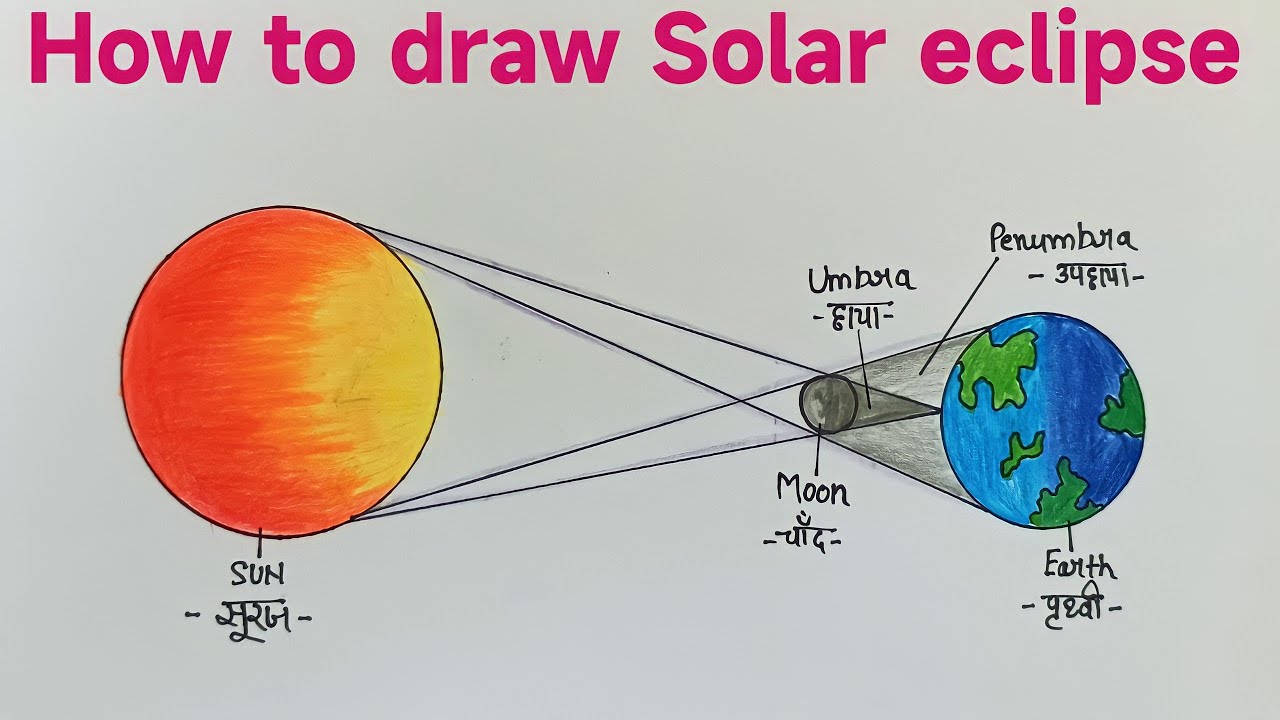


A rare and fascinating celestial event, a total solar eclipse will be visible tonight for millions of people around the world. While it won't be visible in India, you can still watch it through a live stream. Find out how astronomers use mathematics and advanced techniques to accurately predict eclipses and how they can affect animals in unexpected ways. Don't miss out on this once-in-a-lifetime event!
The Allure of Celestial Events: A Total Solar Eclipse
Introduction
Celestial events have captivated humanity for centuries, and a solar eclipse is among the most awe-inspiring. Occurring when the Moon passes directly between the Sun and Earth, it blocks the Sun's light, casting a shadow on our planet. This rare and captivating phenomenon has prompted both scientific inquiry and cultural fascination.
Prediction and Mathematics
The prediction of solar eclipses is a testament to the power of mathematics and astronomy. Astronomers use complex calculations based on celestial mechanics to determine the exact time, location, and duration of future eclipses. By studying the intricate movements of the celestial bodies involved, they can anticipate these events with remarkable accuracy.
Effects on Animals
Intriguingly, solar eclipses have been observed to elicit peculiar behaviors in animals. During totality, when the Sun is completely obscured, some animals may exhibit signs of confusion, disorientation, or even fear. This is thought to be due to the sudden and dramatic change in light conditions, which can disrupt their circadian rhythms and instinctual behaviors.
Upcoming Total Solar Eclipse
On April 8, 2024, a total solar eclipse will traverse parts of North America, Mexico, and central Canada. Unfortunately, India will not be within the path of totality. However, live streams and other virtual platforms will allow individuals worldwide to witness this celestial spectacle safely and conveniently.
Top 5 FAQs and Answers
1. What is the difference between a total, partial, and annular solar eclipse?
2. How often do total solar eclipses occur?
3. Are solar eclipses dangerous to look at?
4. What cultural significance do solar eclipses have?
5. What was the longest total solar eclipse in history?

In an effort to fight the ongoing air pollution crisis, Delhi conducted its first-ever official cloud seeding operation led by IIT Kanpur. The operation involved a small aircraft dispersing specially designed chemical flares into the atmosphere to create rain. While experts say rainfall could occur within 15 minutes to 4 hours, the actual timeframe depends on various factors such as wind direction and moisture content. If successful, the government plans to continue the operation in the coming days.

In the quest for stronger, luscious hair, we often overlook the importance of nurturing the roots. Fortunately, Ayurveda has long stressed the significance of this practice, which has now been backed by modern science. Studies have shown that herbs like Bhringraj and Amla can activate hair follicles, promoting new growth and delaying greying. Fenugreek, Neem, Hibiscus, and Ashwagandha are also found to be beneficial in strengthening and nourishing the scalp, resulting in thicker and healthier hair.

A college student shares her personal journey of becoming a vegetarian, despite facing challenges and health concerns. She then delves into an ethics class she took, where the concept of marginal cases were discussed. Following an article by philosophy professor Alastair Norcross, she concludes that even though individual action may seem insignificant, refusing to consume factory-farmed meat holds moral significance due to the potential to prevent immense suffering for animals.

On October 24, the global community commemorates World Polio Day to honor the legacy of Dr. Jonas Salk and the efforts of countless individuals and organizations in the fight against polio. This highly contagious and potentially deadly disease, once a widespread epidemic, is now largely preventable thanks to the development of a life-saving vaccine. India's successful eradication of polio serves as a testament to the importance of strong vaccination programs and collaborations in public health initiatives.

As winter arrives in India, so does the hazardous air pollution. Delhi NCR's AQI has already crossed the 400 mark, making it crucial to invest in air purifiers, especially after Diwali. Dyson, Qubo, HomePure, and Philips have launched high-quality air purifiers with advanced features to tackle different types of pollutants and create cleaner indoor air. With prices ranging from Rs 5,000 to Rs 1 lakh, these purifiers are a practical and timely purchase for a healthier living.

In a recent family vlog, Indian celebrity couple Shoaib Ibrahim and Dipika Kakar shared their "natural" hair care routine for their son, using a homemade mask made with rice flour, flax seeds, and coconut oil. However, experts warn that what works for adults may not be suitable for babies, whose sensitive skin and scalp could react to the ingredients. While the ingredients may improve hair texture, they do not necessarily promote hair growth. Instead, a healthy diet and good scalp care are more important in maintaining healthy hair.

A recent consumer study has found multiple brands of soft contact lenses in the U.S. to contain "forever chemicals" that can be harmful to both the body and the environment. The study, conducted by the nonprofit organization Environmental Health Sciences, tested 18 varieties of popular contact lenses and found all of them to contain markers for PFAS. Brands such as Acuvue, Alcon, and CooperVision were among the list of affected products. This news serves as a cautionary lesson on the potential risks of overusing contact lenses.

On the birth anniversary of Dr. APJ Abdul Kalam, the ‘Missile Man’ of India, tributes pour in on social media celebrating his life, vision and impact. A visionary scientist, inspiring leader and true patriot, Dr. Kalam's humility, compassion and constant interaction with students continue to inspire generations. His tireless efforts in defense, science and youth empowerment have strengthened India's path towards self-reliance and his legacy continues to motivate young minds to dream big and work hard for the nation.

Recent studies have found that extreme heat, particularly when combined with high humidity, can have a significant impact on mental health. A study in India showed that when wet bulb temperature exceeded 27°C, the probability of reporting severe depression increased by 0.5%, even when the temperature was slightly lower. This finding is consistent with global reviews that have linked high temperatures to mood disorders, increased hospital admissions for psychiatric conditions, and even elevated suicide risk. The Lancet has also published evidence that rising temperatures worldwide are a growing threat to emotional and cognitive health.

In a meeting with university officials in Udaipur, Rajasthan Governor Hari Bhau Bagde stressed the importance of incorporating India's ancient knowledge traditions into academic research. He highlighted the deep repository of knowledge in India since ancient times and urged scholars and scientists to draw upon this tradition in their work. Bagde also suggested making ancient texts available in university libraries for study and research purposes, in order to shape the intellectual abilities and love for the nation among the younger generation.